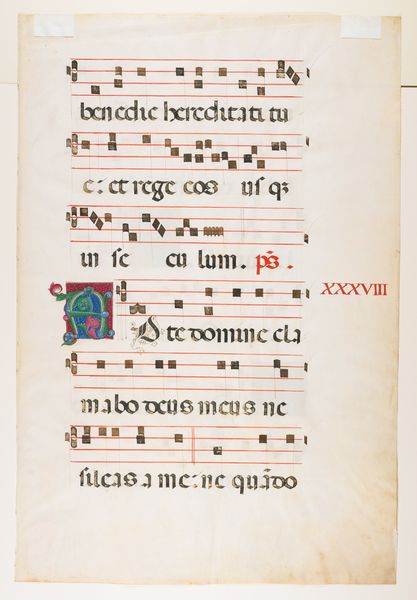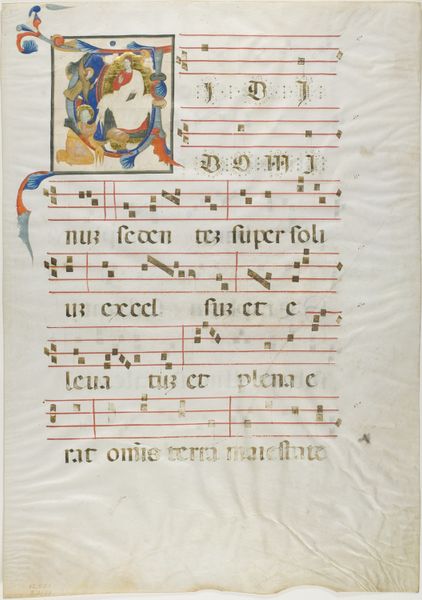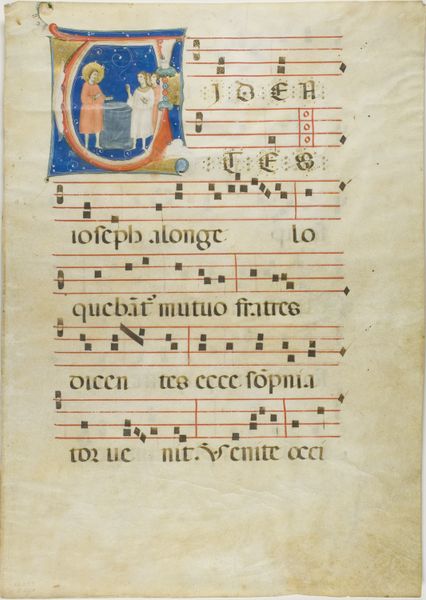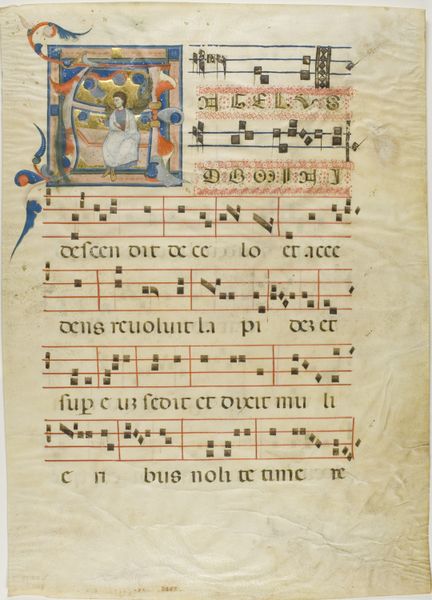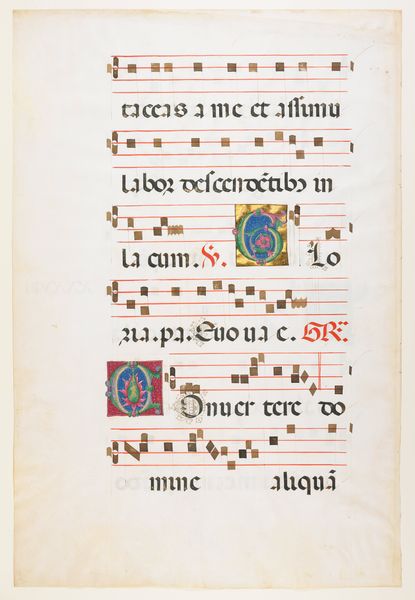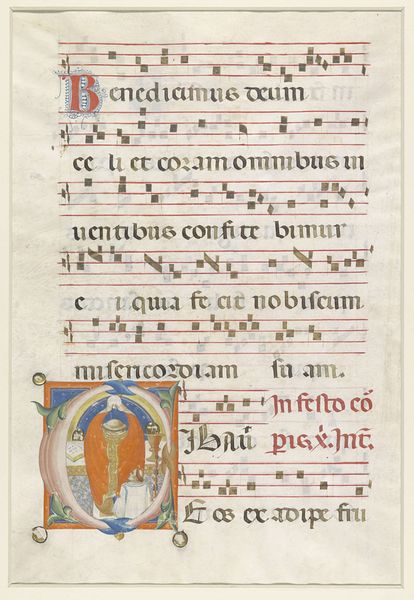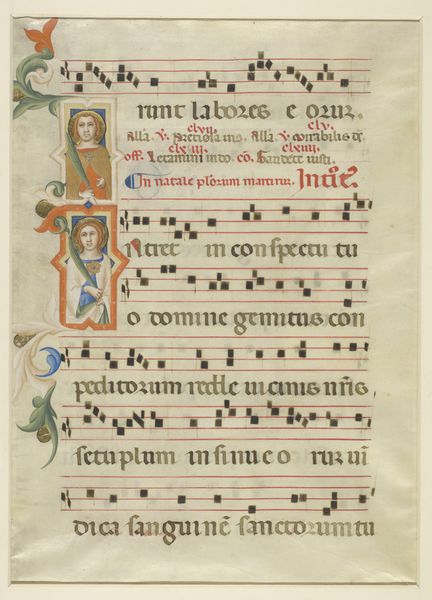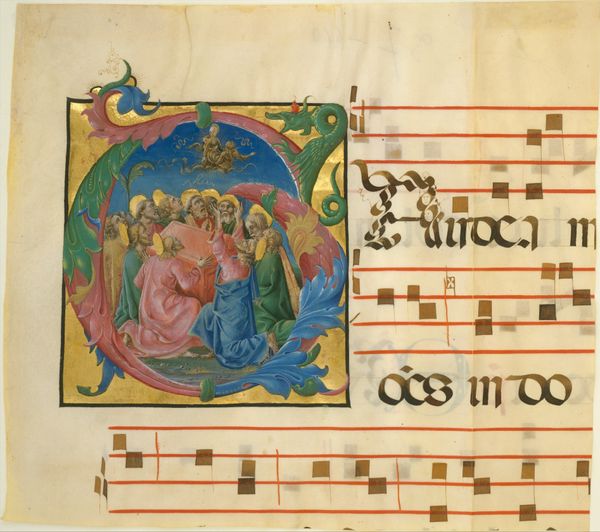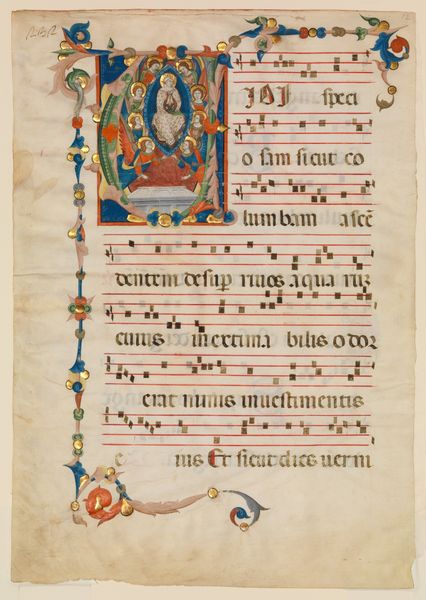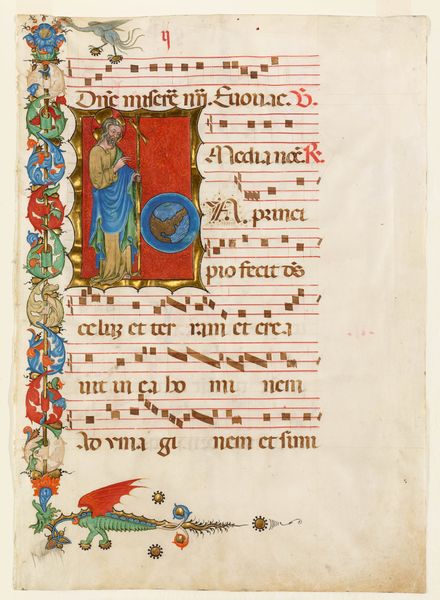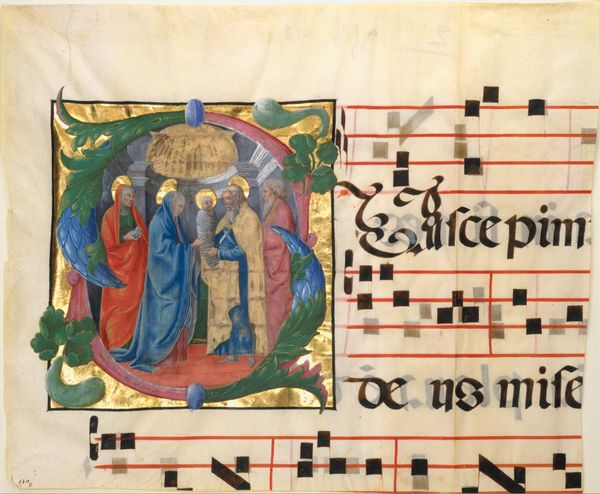
Saint Dominic in a Historiated Initial "G" from an Antiphonary 1310 - 1315
0:00
0:00
drawing, print, textile, paper, ink
#
drawing
#
medieval
# print
#
textile
#
paper
#
ink
#
coloured pencil
#
miniature
#
calligraphy
Dimensions: 70 × 70 mm (initial); 545 × 385 mm (sheet)
Copyright: Public Domain
Curator: Here we have a fascinating illuminated manuscript page, "Saint Dominic in a Historiated Initial 'G' from an Antiphonary," created by Neri da Rimini between 1310 and 1315. It features ink on paper and is a beautiful example of medieval artistry. Editor: The immediate impression is one of remarkable intricacy. It feels simultaneously spare and ornate. The lines of script and music suggest a kind of disciplined beauty, which is offset by the playful and rather enchanting miniature. Curator: Precisely. The use of the initial "G" to frame the miniature of Saint Dominic creates a striking compositional focus. The swirling blue, red and gold within that single letter contrasts texturally with the flat staff lines of the music, directing the eye in unique ways. Editor: Yes, the way the gold leaf catches the light gives it a heavenly quality. However, I’m more interested in Dominic's position as the founder of the Dominican Order. Considering the socio-political role of the Church at that time, how would such an image be read, not just visually, but ideologically? Was it meant to legitimize power, offer spiritual guidance, or perhaps even subtly critique aspects of religious authority? Curator: An excellent point. Structurally, one could say the historiated initial itself serves as a microcosm of the larger manuscript. Its function isn’t merely decorative; it integrates image and text, inviting a kind of calligraphic exegesis, which requires a deep historical and cultural knowledge. Editor: These manuscripts were carefully constructed objects used for public devotion but their creation demanded access to restricted knowledge systems and costly resources, that served to differentiate clergy from the masses, for example. And beyond its aesthetic merits, its creation, use, and even its survival speak volumes about class, knowledge and power structures of the Middle Ages. Curator: Thinking about it in such an historical framework broadens the scope beyond simple stylistic analysis. Considering those intersections really deepens one's understanding. Editor: It becomes a multi-dimensional cultural artifact in so many complex dimensions of history. Curator: I agree! Now when I look at it again, I realize it goes well beyond simple elegance, it really captures a lot.
Comments
No comments
Be the first to comment and join the conversation on the ultimate creative platform.
